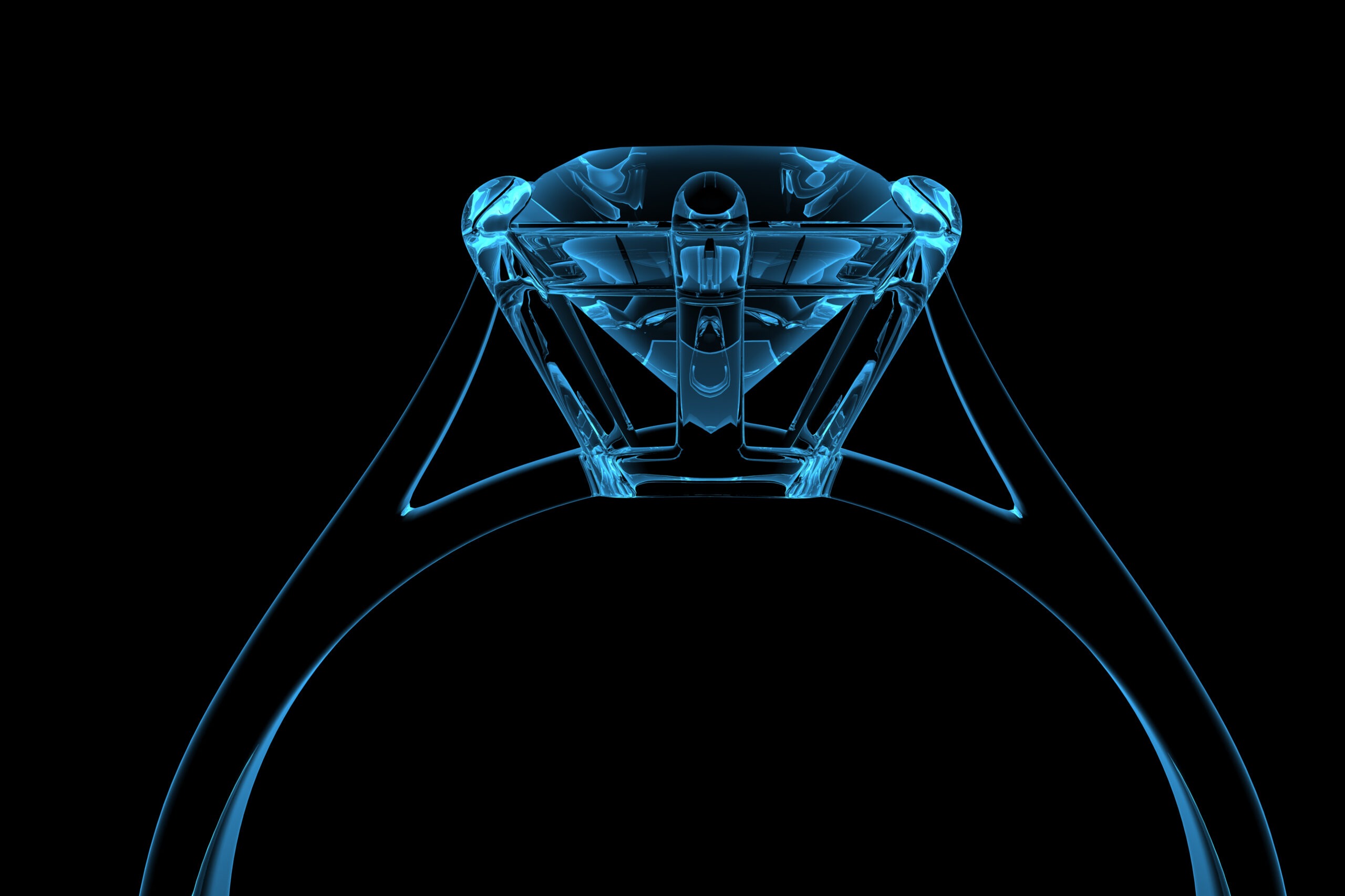The process of carving a hard modeling wax to shape a piece of jewelry is now being replaced by 3D printing prototypes or the actual jewelry itself. Instead of manual carving, jewelers now use computer aided design (CAD) software and jewelry design software to create a digital model of the design. This model is then 3D printed using wax or resin to create a physical model of the jewelry piece.
The use of 3D printing for creating metal jewelry offers several advantages. One of the main benefits is that it allows jewelers to produce batches of unique items, unlike the traditional casting process that relies on a single model.
Moreover, 3D printing eliminates the need for creating a wax model, which significantly saves time during the production process.
How 3D Printing has Modernized the Process
Jewelers now use specialized computer software such as jewelry design software or any computer-aided design (CAD) program to create or modify a design before 3D printing it as a wax pattern.
The next step involves the traditional process of lost wax casting, where the wax pattern is used to create a mold for casting the final piece of jewelry.
When discussing 3D printing in jewelry making, it’s common to refer to the process of 3D printing a wax model that serves as the basis for creating a mold, similar to the traditional method. While it’s technically feasible to directly 3D print precious metals, most jewelers rely on 3D printers to quickly generate models from their digital designs, bypassing the need for time-consuming manual carving and the requisite intricate skills. Depending on the size of the 3D printer, it’s possible to print multiple models in castable wax simultaneously, saving a considerable amount of time and effort.
CAD software is an ideal tool for designing intricate structures like jewelry, allowing for precise attention to the small-scale details that jewelry demands. Moreover, it facilitates consistency and uniformity in products that require it, such as sets of earrings, wedding bands, and other mass-produced items.
Innovations in the Jewelry Industry
The initial stage of 3D printing jewelry involves creating a digital design. If you have a specific idea in mind, you’ll need to utilize computer aided design (CAD) software to bring it to life. Fortunately, there are several 3D design software solutions available that cater to different requirements and preferences.
If creating jewelry designs from scratch doesn’t appeal to you, modifying an existing design may be a more viable option. After the scan is completed, it’s either transferred to CAD software for further adjustments or submitted to a jewelry company for production.
Here are two ways in which 3D printing can be used to make jewelry:
1. Direct 3D Printing
While it’s possible to directly 3D print jewelry in precious metals, most independent jewelers don’t utilize this approach due to the relatively high cost of 3D printers. However, online printing services offer a more accessible alternative as they offer direct 3D printing in precious metals when you upload your digital model to their on-demand service.
Direct 3D printing utilizes powder bed fusion techniques, such as selective laser melting (SLM) or metal laser powder bed fusion, to fuse metal powder particles together using a laser.
Another 3D printing method called binder jetting can also be used with metals or polymers. The range of metal options available for use depends on the specific 3D printer employed.
Acquiring a 3D printer that operates with gold powder can be costly, but the good news is that any unused materials from one jewelry-making session can be repurposed for the next. Additionally, the printer can also produce jewelry using non-precious metals, ceramics, and polymers.
2. Investment Casting
The Investment Casting method is widely used in 3D printing jewelry, which combines the benefits of 3D printing with traditional mold manufacturing techniques. The process eliminates the need for hand-carving hard modeling wax to achieve the desired shape. Instead, a jeweler designs the piece using CAD software and prints a wax or resin model using a 3D printer. Resin models can be produced via stereolithography (SLA) or digital light processing (DLP). Afterward, the traditional lost wax casting process can be used to create the final piece.
In case you’re not acquainted with the process, the lost wax technique involves encasing a wax or resin model in a plaster-like substance that solidifies, followed by heating the mold to allow the model to melt away, leaving a void that’s then filled with molten precious metal. After that, it’s a typical metal casting process. When the metal cools and the mold is taken out, the item is handled with care, mechanically processed, and polished.
A 3D printer not only enables the creation of a highly detailed master model, but it also allows for quick customization of the digital file using software, allowing for the printing of additional models or even multiple models simultaneously. This significantly speeds up the process of iterating designs and enables mass customization. This approach is advantageous because there is no need for a specific type of metal and virtually any metal can be utilized.
Conclusion
While traditionally made jewelry retains its undeniable charm and “special” feel, 3D printed pieces do make for a strong case in terms of a several advantageous points productions wise.
3D printing significantly reduces manufacturing time per piece. Handcrafted jewelry could each take days forming a design that would only take a printer a few hours to make in multiples. Designs can also be more intricate since the creation and alterations can be done within a program or application, the execution of which would not require the level of skill that the traditional jewelers take years to perfect.
Although handmade jewelry is valued for the skill and craftsmanship involved, it is a time-consuming process that requires patience and expertise. While there is something unique and special about manually sculpting personal jewelry, the reality is that it takes a significant amount of time and skill to create pieces entirely by hand.
The advent of 3D printing has made it possible for anyone to create high-quality, one-of-a-kind jewelry, while also providing professional jewelers with a more cost-effective, efficient, and quicker production solution. 3D printing has caused an upheaval in the jewelry market and inspired the emergence of new technology-driven jewelry companies that offer affordable custom manufacturing options.




